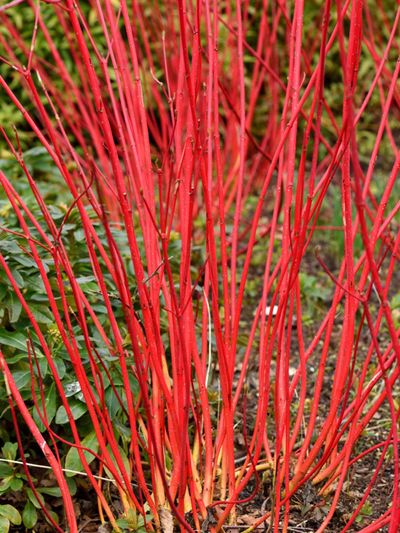Shrub-like dogwoods do exist and work well in smaller gardens. In fact, there are many types of dogwood shrubs, each with its own unique characteristics. For more information, read on.
Is There a Dogwood Shrub?
The genus Cornus includes many different dogwood shrub varieties, including some that could be called subshrubs. They grow fast and provide year-round garden interest with spring flowers, summer berries, and exceptional fall color. However, shrubby dogwoods do not grow the showy bracts that the taller dogwood trees do. Their flowers also appear after the foliage has fully grown. So do not expect them to be the same showstoppers that dogwood trees are. In fact, many dogwood shrub varieties are grown for their winter interest. The colorful red-hued stems shine in an empty winter backyard. With many different types of dogwood shrubs and dozens of cultivars, you are sure to find one that works in your yard.
Popular Dogwood Shrub Varieties
Most shrub-like dogwoods are in the Cornus genus and called dogwood, like Tatarian dogwood (Cornus alba). This variety of dogwood grows to 10 feet (3 m.) tall and offers small yellow flowers in spring. However, most gardeners choose this shrub-like dogwood for its red-hued stems in winter. You can also get good winter color from the bright red twigs of the redosier dogwood (Cornus sericea), also commonly known as red-twig dogwood. When the snow falls the red branches look spectacular in contrast. Redosier also grows to 10 feet (3 m.) tall. For extra stem color, choose cultivar ‘Cardinal’ (cherry red stems) or ‘Flaviramea’ (yellow stems). Other dogwood shrub varieties may appeal to those with wet or marshy soil. For example, silky dogwood (Cornus amomum) is a shrub that is native to the U.S., growing along streambanks and in wet prairies. It also grows to 10 feet tall (3 m.) with a rounded canopy and is an excellent wet-site selection.
Dogwood Shrub Care
Dogwood shrub care is not difficult. Like dogwood trees, shrubs do well in almost any exposure, from full sun to significant shade. Grow dogwood shrubs in full sun or part shade and moist soil. As noted above, some types of dogwood shrubs thrive in soil that is periodically or consistently moist. Be sure to inspect the label when you are selecting one to make certain it will match your needs. Transplant your dogwood shrubs in late spring or early summer. The plants require irrigation immediately after planting and regularly for the first growing season. It’s helpful to layer mulch over the root zone to hold the moisture in the soil. Dogwoods are not among the shrubs that need frequent pruning, but if you are planting them for winter interest, you’ll want to take out the oldest canes regularly. New growth is what bears the bright coloration. Prune out about a third of the old canes in early spring.
